
Dubai Monuments Guide 2025: Explore the City’s Most Iconic Landmarks
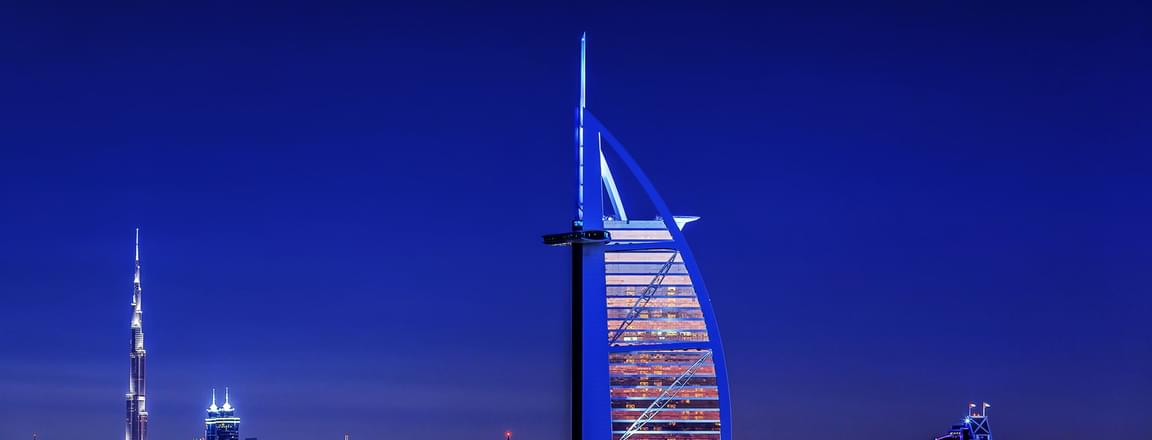
Dubai’s skyline may be dominated by record-breaking towers, but its soul is equally rooted in cultural heritage and architectural storytelling. This 2025 guide to Dubai monuments highlights a diverse mix of historic landmarks, modern wonders, and cultural sites that together showcase the city’s evolution. From ancient forts and traditional mosques to futuristic skyscrapers and immersive museum spaces, these Dubai monuments provide meaningful context to the city’s journey from a fishing village to a global destination. Whether you're seeking panoramic views, historical insight, or cultural understanding, this guide offers essential information on what to visit, when to go, and what to expect at each site, ensuring a well-rounded and enriching experience of Dubai's most iconic monuments.
Key Takeaways
- Dubai is home to some of the world's most remarkable monuments, blending cutting-edge innovation with cultural heritage.
- Major sites include the Burj Khalifa, Al Fahidi Fort, and Jumeirah Mosque, each offering a distinct experience.
- Visitors can explore modern marvels and centuries-old architecture within the same city itinerary.
- Dubai’s cultural landmarks offer insight into the Emirati way of life, making the city more than just a shopping or luxury destination.
- Dubai Dolphinarium
1. Burj Khalifa
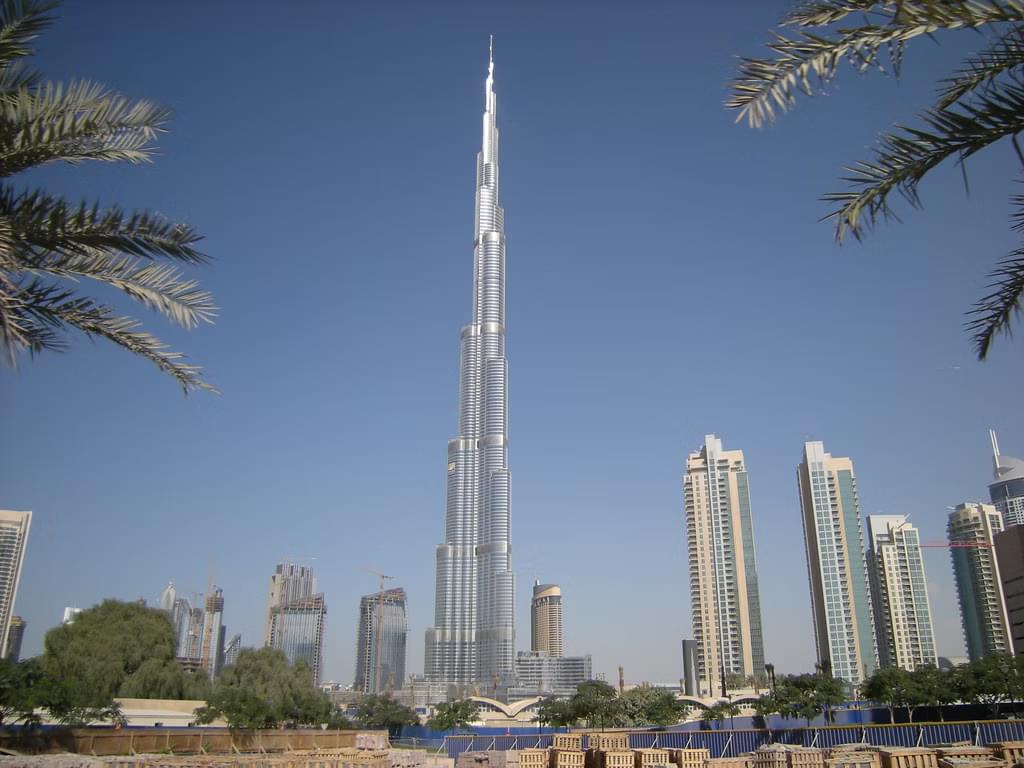
The Burj Khalifa is the tallest building on the planet, and it is approximately 828 meters (2,717 feet) high. It is a 163-story engineering marvel and the symbol of the global aspiration of Dubai, and was opened in 2010. The tower has observation points, which are located on the 124th, 125th and 148th levels and offer uninterrupted views of the Dubai skyline, desert, and coastline. In addition to Dubai tourism, the Burj Khalifa is home to premium housing, corporate housing, restaurants and the highest swimming pool in the world.
Visitor Highlights:
- Observation Decks: The observation decks are located at Levels 124, 125 and 148 and are panoramic and provide a view of the city, desert and the Gulf.
- Evening Fountain Shows: Held every 30 minutes from 6:00 PM to 11:00 PM at the Dubai Fountain.
- Best Time to Visit: During sunset time to capture stunning photos during the golden hour; to see the city skyline.
Essential Information:
- Entry Fee: The standard admission costs AED 169. Premium access to Level 148 costs about AED 399.
- Booking Tip: Book online to limit long queues and particularly on weekends.
2. Burj Al Arab Jumeirah

The Burj Al Arab Jumeirah, often called the only seven-star hotel in the world, is well-known because of its sail shape, up to 321 meters tall and provides ultimate luxury. Although it is not a monument but more of a hotel, it has influenced its surroundings due to the unique architecture and local culture to an extent that it has become one of the symbols of Dubai's skyline. The design of the buildings takes into account the traditional Arabian architecture and combines it with modern engineering into a structure that shows the heritage and innovation of Dubai.
Key Attractions:
- Skyview Bar and Afternoon Tea: Open to non-guests through reservation.
- Helipad and Infinity Pools: Exclusive to hotel guests.
- Best Viewing Spot: Jumeirah Public Beach offers ideal views for photography.
Entry Note
- Access is restricted without a reservation. Book a dining or spa experience to explore the interiors.
3. The World Islands

Located 4 kilometres off the coast, The World Islands is an artificial archipelago constructed from reclaimed land. Designed to mimic a map of the world, the development consists of 300 islands divided into continents.
Tourism Updates (2025):
- Select islands, such as The Heart of Europe, are now open to visitors.
- Activities include day-pass beach resorts, themed events, and marine excursions.
How to Visit
- Access: Via yacht charters, private boat tours, or resort transfers.
- Note: Not all islands are accessible to the public; confirm with operators before planning.
Also Read: Dubai Visa Guide
4. Al Fahidi Fort and Dubai Museum

Constructed in 1787, Al Fahidi Fort is the oldest existing building in Dubai and serves as the location for the Dubai Museum. Originally built to defend Dubai's crucial creek-side location, this fortress has served multiple purposes throughout its history, including functioning as a palace, garrison, and prison. The museum's underground galleries recreate old Dubai's souks, pearl diving expeditions, and desert life, providing context for understanding modern Dubai's remarkable evolution.
Exhibits Include:
- Bedouin lifestyle, pearl diving history, and traditional Emirati homes.
- Life-size dioramas and archaeological findings from nearby excavations.
Visitor Details:
- Timings: 8:30 AM – 8:30 PM (Saturday–Thursday); 2:30 PM – 8:30 PM (Friday).
- Entry Fee: AED 3 (adults), AED 1 (children).
5. Al Fahidi Historical District (Bastakiya)
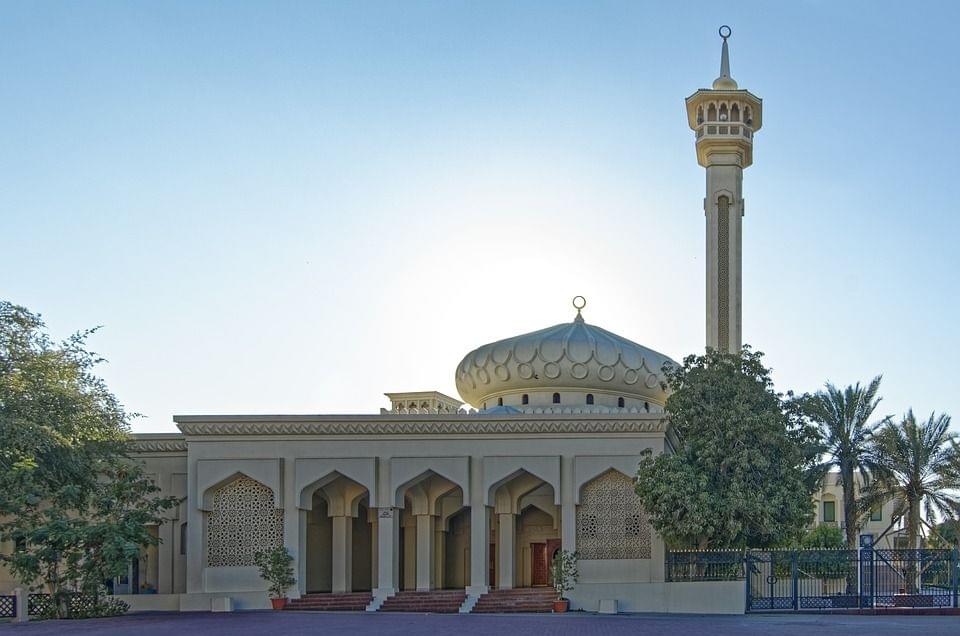
The Al Fahidi Historical District, also known as Bastakiya, a heritage site located close to Dubai Creek, provides a historical view of what life was like in 19th-century Dubai. It is an old residential place with unique wind towers, winding alleyways, and courtyard houses showcasing the way inhabitants of this region coped with the desert environment before modern air conditioning. A visit to its refurbished walkways will provide the visitor a first-hand feel of the architectural history and the way of community life in the old Dubai.
Features of Interest:
- Wind-Tower Architecture: A historic cooling system by natural means.
- Art Galleries & Cultural Centres: Including XVA Gallery and Coffee Museum.
- Walking Tours: Visit the back streets, restaurants and rebuilt houses.
Visitor Details:
- Entry: Free and open to the public year-round.
- Best Time to Visit: Mornings or evenings for cooler temperatures
6. Dubai Frame
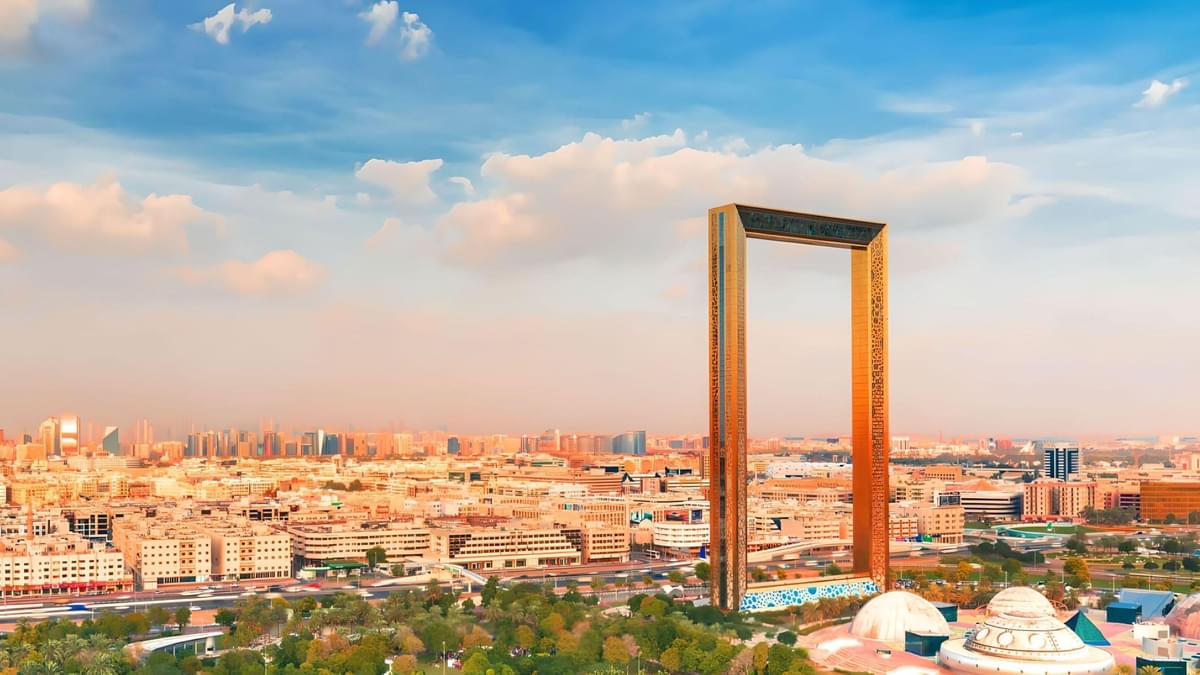
Dubai Frame has given people the amazing opportunity to look at the development of the city. In a sense, it is the real framing of what the old and new Dubai saw. This rectangular facility, 150 meters high, offers panoramic views of the old neighbourhood in the north and the contemporary skyline in the south. Opened in 2018, the Frame has a ground-level museum explaining the development of Dubai, and its sky bridge is a glass walkway with interactive exhibits. The monument can be regarded as both an observation point and an educational experience involving the urban evolution in Dubai.
Features of Interest:
- Sky Glass Bridge: 93-long transparent bridge of glass which bridges the two towers at the top, providing astonishing visions under your feet.
- Old vs. New Dubai Galleries: Interactive displays on the mezzanine section that will display the evolution of Dubai over time.
- Future Dubai Exhibit: A projection presenting how the city might be in 50 years.
Visitor Details:
- Entry Fee: AED 50 (adults), AED 20 (children); free for children under 3 and people of determination.
- Timings: 9:00 AM to 9:00 PM daily
Also Check: Best time to visit Dubai
7. Jumeirah Mosque
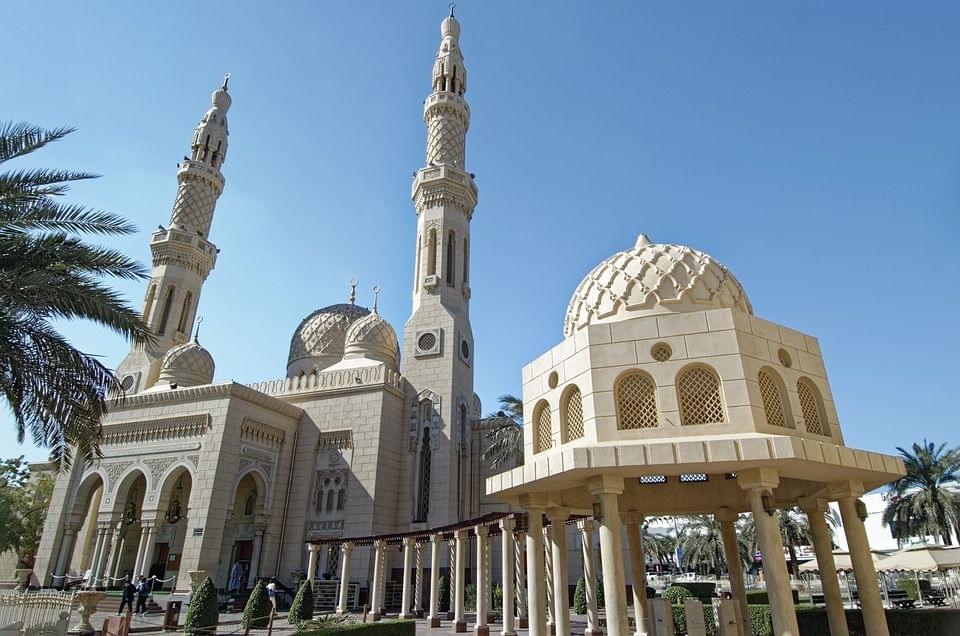
The Jumeirah Mosque is a leading example of Islamic architecture and is open to visitors of all faiths as part of the city’s cultural outreach. It stands out as Dubai's most photographed religious monument, built entirely from white stone in the medieval Fatimid architectural style. Constructed in 1979, this mosque exemplifies the beauty of traditional Islamic design with its twin minarets and central dome.
Why It’s Worth Visiting:
- Constructed entirely from white stone in Fatimid style.
- Offers guided tours led by the Sheikh Mohammed Centre for Cultural Understanding (SMCCU).
Tour Details:
- Timings: 10:00 AM (Saturday–Thursday).
- Fee: AED 35.
- Dress Code: Modest attire; traditional clothing can be borrowed on site.
Conclusion: Exploring Dubai Through Its Monuments
Dubai’s most iconic monuments are not just Instagram-worthy landmarks because they are physical stories of ambition, culture, and heritage. From the towering Burj Khalifa to the humble corridors of Al Fahidi Fort, each site reveals a different chapter of Dubai’s identity. Whether your interests lie in modern architecture or historical exploration, this city offers a unique blend of both worlds.
Are you ready to explore what Dubai has to offer? Book your Dubai tour package and get to experience this golden city at its best!
FAQs - Dubai Monuments
1. What are the most visited monuments in Dubai?
The Burj Khalifa, Dubai Mall, and Burj Al Arab attract millions of visitors annually, making them the most visited modern landmarks. Heritage sites like Al Fahidi Fort and Jumeirah Mosque are also popular for cultural exploration.
2. Are Dubai monuments open all year round?
Yes, most monuments are open year-round, though outdoor areas are best visited between November and March due to extreme summer heat.
3. Can non-Muslim tourists visit mosques in Dubai?
Yes, the Jumeirah Mosque offers guided cultural tours for non-Muslim visitors. Other mosques may have entry restrictions.
4. Is there a dress code when visiting religious monuments in Dubai?
Absolutely. Both men and women are expected to wear modest clothing that covers shoulders and knees. Headscarves are required for women when entering mosques.
5. Are Dubai’s historical monuments accessible by public transport?
Yes. Key areas like Al Fahidi District, Dubai Museum, and Dubai Mall are accessible via the Dubai Metro and public buses. Ride-hailing apps like Careem and Uber are widely available.
Update your location?



